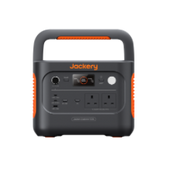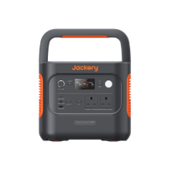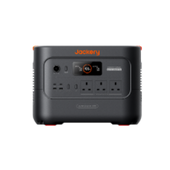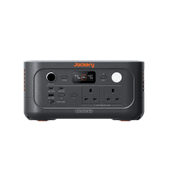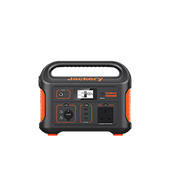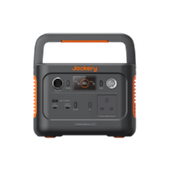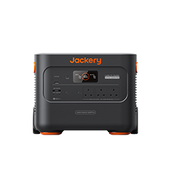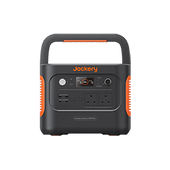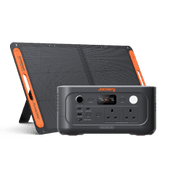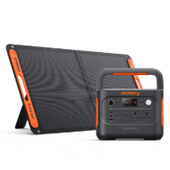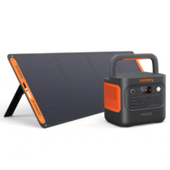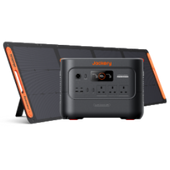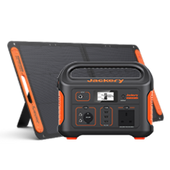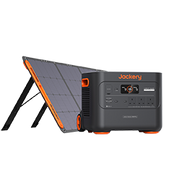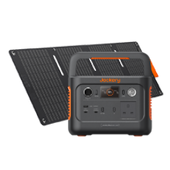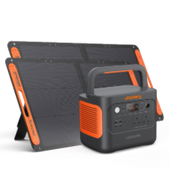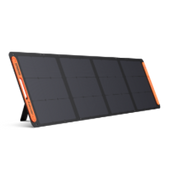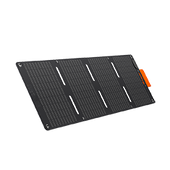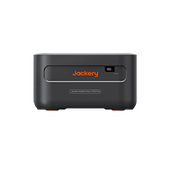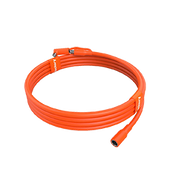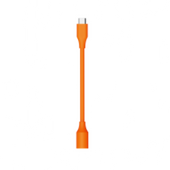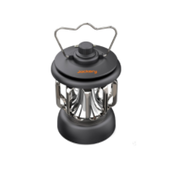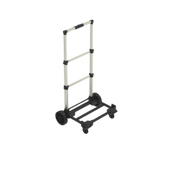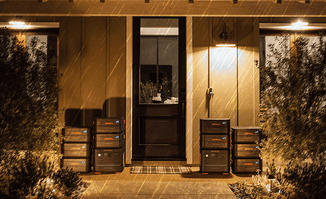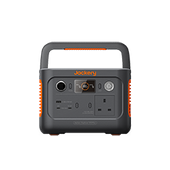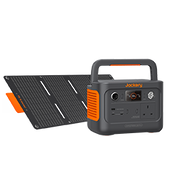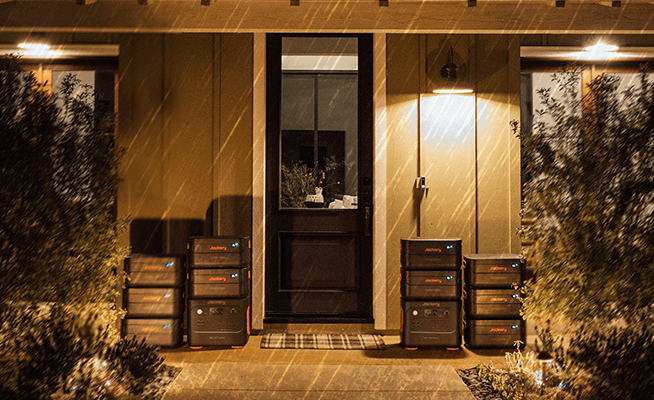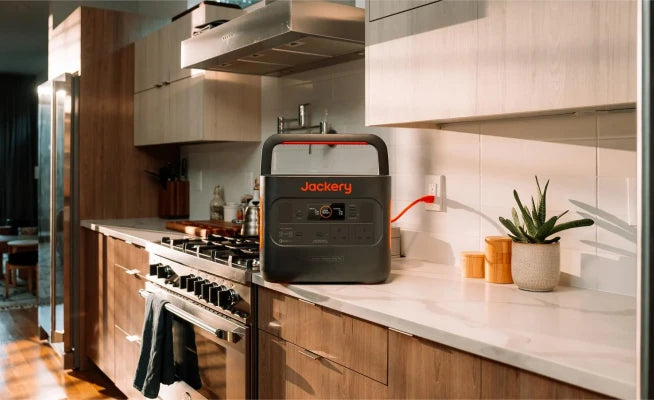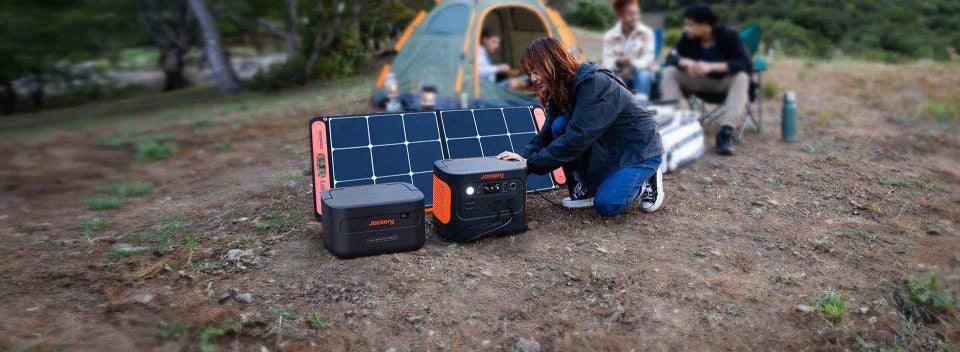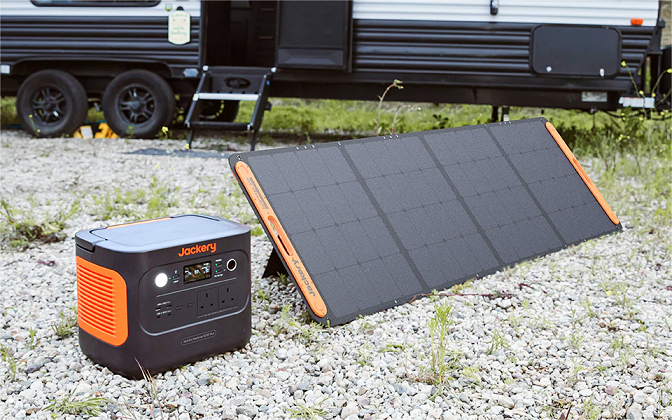With the continuous advancement of technology and further reduction of costs, the application prospects of solar panels in the UK will be broader. By 2030, global solar power generation will account for 15% of total electricity demand. (According to the International Energy Agency)
The British government is also actively promoting the development of renewable energy. It has formulated policies and measures to support the popularisation of clean energy, such as solar energy. MCS data shows more than 1.3 million UK households have started using solar energy.
With the cost of living staying elevated, numerous homeowners are seeking methods to cut expenses. Energy bills are a significant worry, consuming a substantial part of household income, and more families are opting for solar energy to reduce their electricity expenses.
This guide will explain how much energy solar panels can save in the UK. Besides, if a rooftop solar panel system costs too much, a solar generator, like Jackery Solar Generator, a portable solar system is a wise option.
|
Key Takeaways: |
|
- The cost of solar panels typically ranges from £4,500 to £6,000 for a system between 3kW and 4kW. - In the UK, most household solar panels have a power of between 250W and 400W. On average, the standard size of a typical 350W solar photovoltaic panel is about 1.9m long and 1m wide. - Solar panels can reduce electricity bills by £440 to £660 a year and perhaps up to £1,005, thus confirming their cost-saving benefits. - We recommend Jackery Solar Generator 2000 Plus and 1000 Plus, portable solar systems for charging appliances and electronics indoors and outdoors. |
The Basics of Solar Panels
Few people in the UK have been affected by rising energy costs. In search of more economical energy consumption, many people have turned to solar panels to generate sustainable and cost-effective electricity. Here are the basics of solar panels.
Solar panels are essential to modern renewable energy technology. They can convert solar radiation directly into electrical energy through the photoelectric effect.
What Are Solar Panels Made of?
The solar cell consists of positive and negative layers of silicon material. Here is a detailed breakdown of the materials that make up a solar panel (6 main components):
Silicon Wafers (solar cells): High-efficiency monocrystalline or polycrystalline silicon solar cells are the core material.
EVA Film: EVA (ethylene vinyl acetate) film is used for encapsulation and has good light transmittance and anti-ageing ability.
Glass: Low-iron tempered velvet glass is used for panels. It has high light transmittance (more than 91%), effectively reflects infrared light, and withstands ultraviolet radiation.
Back Sheet: Fluoroplastic film (TPT) is usually used. It is weather-resistant and waterproof and reflects sunlight to improve efficiency.
Frame: The high-strength aluminium alloy frame is robust, provides mechanical protection, and is easy to install.

How Do Solar Panels Work?
Solar panels are mainly composed of multiple solar cells. Sunlight that strikes a solar panel is absorbed by individual photovoltaic cells (made of various layers of semiconductor material, most commonly silicon), stimulating the release of electrons from atoms and forming electron-hole pairs.
Under the action of the electric field inside the cell, these electrons and holes are separated and move in opposite directions, thereby generating a voltage at both ends of the cell. An electric current can be formed by connecting these cells' positive and negative poles through wires to achieve photoelectric conversion. Generally, the stronger the sunlight, the more electricity the solar panel generates.
How Much Energy Do Solar Panels Save in the UK?
In the UK, private solar power generation often exceeds its needs, and the surplus electricity can be sold to the national grid. It saves households' electricity bills and provides clean energy to the national grid, achieving a win-win energy use. So, how much energy can solar panels save in the UK? In other words, how many watts of electricity can solar panels generate?
How Much Do Solar Panels Cost in the UK?
Solar panels typically cost £4,500 to £6,000 for a system between 3kW and 4kW. This size can accommodate the typical energy consumption of 2,700kWh, which is relevant for most two—to three-bedroom homes.
The price of solar panels typically ranges from £2,500 to £3,500 for 2kW systems and from £9,500 to £10,500 for 6kW systems, which can effectively meet the energy needs of the majority of households in the UK. While larger systems and commercial solar panels can surpass 6kW, such instances are less common.
Please refer to the table below to better understand the costs associated with various solar panel system sizes. It details the yearly energy output for each system size, along with the estimated costs.
|
Solar System |
Solar Panels Needed (450W) |
Yearly Energy Output |
Estimated Costs Excl. |
|
3kW Solar System |
6 |
2,550 kWh |
£4,500-5,500 |
|
4kW Solar System |
8 |
3,400 kWh |
£5,000-6,000 |
|
5kW Solar System |
10 |
4,250 kWh |
£7,500-8,500 |
|
6kW Solar System |
13 |
5,100 kWh |
£9,500-10,500 |
(Data Source: Green Match)
If you seek the most economical solar panels in the UK, consult an experienced solar installation to identify a solution that suits your circumstances while maintaining quality and efficiency. You can also choose a portable solar system, like Jackery Solar Generator, which has over 12 kWh capacity but at a small cost.
The existing VAT policy allows for a savings of £1,850 on installation costs. This discount may include all or the majority of the labour expenses, which can range from £600 to £3,000, contingent upon the intricacy of the installation.

How Much Electricity Do Solar Panels Produce?
In the UK, most household solar panels have a power of between 250W and 400W. On average, the standard size of a typical 350W solar photovoltaic panel is about 1.9m long and 1m wide.
On average, a single 350W solar photovoltaic panel can generate 350 watts per hour, or 0.35 (kWh).
In reality, no solar panel system in the UK relies on just a single panel. A 350W panel will hardly power your TV for an hour. Most solar systems in the UK contain multiple PV panels, and the system's total output matters. Every solar panel array is different, and calculating the exact amount of energy is problematic.
Domestic solar panel systems typically range in power from 1 kilowatt (kW) to 5kW. Generally speaking, a 4kW solar panel array will produce enough energy to meet approximately 50-70% of the energy needs of the average UK home. On the other hand, a 2kW or 3kW array will meet approximately 25-50% of the electricity needs of the average UK home.
The annual electricity generation can be estimated using the following formula:
Annual electricity generation (kWh) = System size (kW) × Daily sunshine hours × 365
Daily electricity generation of a 4kW solar PV system in the UK:
4kW ×2.5 (or 4) hours = 10−16kWh
The UK's 4kW solar PV system can generate 10-16 kWh of electricity daily. This estimate considers the UK's lower average peak sunshine hours, which range from about 2.5 hours in winter to about 4 hours in summer.
Annual Electricity Generation of a 4kW Solar PV System in the UK:
The annual electricity generation of a 4kW solar PV system in the UK will be calculated based on the average peak sunshine hours in winter and summer.
Average peak sunshine hours refer to winter (about 2.5 hours):
4 kW × 2.5 hours/day × 365 days/year = 3,650 kWh/year
Average peak sunshine hours refer to summer (about 4 hours):
4 kW × 4 hours/day × 365 days/year = 5,840 kWh/year
In summary, a 4kW solar PV system can help a UK household save 3,650 kWh to 5,840 kWh of electricity annually.
However, the above data are based on the maximum output solar panels can produce under optimal conditions. Factors such as solar panel efficiency, shading, angle and direction of the panels, weather conditions and solar radiation will affect the actual power output. Please consult your local solar installer for more accurate data.
How Much Energy Do Solar Panels Save in the UK?
Solar panels can reduce electricity bills by £440 to £660 a year and perhaps up to £1,005, thus confirming their cost-saving benefits. Furthermore, they have the potential to generate revenue through surplus energy exports.
Solar energy can, therefore, fulfil two functions. Firstly, it reduces the grid's energy consumption, decreasing your energy expenses. Secondly, you can receive financial compensation through Smart Export Guarantee (SEG) payments contingent upon your energy provider.
|
Solar System |
Annual Savings on Utility Bills |
Annual Savings with SEG Payments |
|
3kW System |
£440 |
£520 |
|
4-5kW System |
£660 |
£735-830 |
|
6kW System |
£1,005 |
£1,360 |
(Data Source: Green Match)
The amount of money you can save depends on the manner and timing of your electricity usage generated by your solar panels. Using your appliances while at home during the day maximises your investment. However, without a solar battery, if you operate your appliances only during nighttime, you will be required to draw electricity from the grid.
The Smart Export Guarantee
In addition to reducing your energy expenses, solar panels can also provide an opportunity to generate income, offering further financial relief for household budgets.
Energy suppliers compensate you for the surplus solar energy you return to the grid. This occurs under the Smart Export Guarantee (SEG), which replaced the Feed-in Tariff (FiT) in 2020. In England, Scotland, and Wales, households receive compensation for the solar energy they produce but do not consume, which is subsequently fed back into the energy grid.
The amounts for payments differ based on the energy provider. Their variations can be significant, spanning from approximately 1p per kilowatt hour (kWh) to 40p per kWh. The Energy Saving Trust indicates households receive between £220 and £320 annually from the Smart Export Guarantee.
Solar Panel ROI and Break-Even Point
The break-even point for household solar panels varies between 9 and 10 years. The return on investment for solar panels can vary from £5,500 - £6,500 to £15,000 - £16,000, with higher installations yielding superior returns.
Here is a summary of the anticipated savings associated with various solar system sizes, the duration required to achieve the break-even point and the timeline for realising a return on investment.

Securing optimal pricing for your solar panel installation is essential to maximise the financial returns on your investment promptly.
What Affects Solar Panels Payback Time?
Solar panel efficiency and energy savings are affected by various factors, including installation quality, geographical location, and shading. Each plays a significant role in determining how much energy a solar panel can generate. The following will detail the key factors affecting solar panel efficiency and savings in the UK.
Panel Materials and Manufacturing Processes
Panel materials and manufacturing processes are the essential factors affecting solar panels' conversion efficiency. Different materials and manufacturing processes will result in different photovoltaic conversion efficiencies of panels.
The following are three standard solar panels and their efficiencies:
|
Solar Panel Type |
Efficiency |
|
Monocrystalline solar panels |
22-27% |
|
Polycrystalline solar panels |
15-22% |
|
Thin-film solar panels |
15-22% |
The data in the table are all estimates and are for reference only. For more accurate data, please consult a professional solar panel installer.
High-efficiency solar panels usually use advanced technology and high-quality materials to absorb and convert solar energy better. Therefore, products with high photovoltaic conversion efficiency and stable performance should be prioritised when choosing solar panels.
Surface Cleanliness
The UK has a humid climate with rainy and snowy weather, which may cause dust, dirt, snow, and other substances to accumulate on the surface of the panels. These substances block sunlight and reduce the panels' conversion efficiency. Therefore, regular cleaning of the surface of solar panels to keep them clean and transparent is an important measure to improve efficiency.
Light Conditions
Although the UK is located at a high latitude, the summer sunshine hours are long, and the light conditions are relatively good. Under good light conditions, solar panels can convert light into electrical energy more efficiently. On the contrary, power generation efficiency will be affected when cloudy, rainy, or low light.
Installation Angle and Direction
The installation angle and direction of solar panels significantly impact their efficiency. In the UK (51 degrees north latitude), the south-facing installation direction is generally considered the best choice because it can maximise the reception of solar radiation. The choice of installation angle needs to be adjusted according to the local latitude and seasonal changes to ensure that sound lighting effects can be obtained in different seasons. Generally speaking, the installation angle of solar panels in the UK is between 30 and 45 degrees. (Please consult a professional solar panel installer for specific installation directions and tilt angles)
Shadow Shading
Obstructions, such as trees, tall buildings, or other obstacles, may cause solar panels to receive uneven light, affecting their power generation efficiency. Therefore, when installing solar panels, you should avoid shadows and ensure they are usually directly exposed to sunlight.
How to Maximise Solar Panel Savings
Specific actions will guarantee you receive the complete financial advantage from your solar panels.
Procure high-efficiency solar panels if the elevated cost is inside your financial means. Despite their higher cost, solar panels occupy less roof space and generate greater electricity, resulting in substantial long-term savings throughout their lifespan.
Ensure your solar panels are installed to achieve the best sunlight exposure, preferably free from shade by barriers such as trees and buildings.
Do not overlook the solar panel grants you may qualify for (more details will follow). Acquiring solar panels at a reduced cost or no expense will enhance your overall savings on energy expenditures.
Utilise cheaper electricity rates during off-peak hours if your energy supplier provides time-of-use tariffs, particularly when solar energy production peaks.
Solar panels require minimal maintenance; nevertheless, occasional system cleaning is recommended to ensure optimal efficiency. Rinse the panels to eliminate any dirt and debris not cleared by precipitation. Arranging maintenance inspections and a yearly service by an expert will swiftly discover and rectify any issues.
Utilising energy-efficient appliances and lighting will significantly diminish total energy use. One method to optimise solar power savings is to include battery storage.
Jackery Solar Generators Explained
A solar generator uses solar panels to capture and store solar energy in a portable power station. It produces no toxic emissions, functions efficiently, and causes no ecological harm. Jackery Solar Generators convert sunlight into electricity, offering a reliable power source for camping, RVing, off-grid living, and home backup.
Jackery Solar Generators provide swift solar charging capabilities, allowing the power stations to be charged in hours. The solar panels employ monocrystalline silicon solar cells and have an outstanding efficiency rate of 25% to enable swift charging. The power stations can be recharged using car chargers or wall outlets for enhanced convenience.
|
Appliances |
Working Hours |
|
|
Jackery Solar Generator 1000 Plus (1.25-5 kWh) |
Jackery Solar Generator 2000 Plus (2-12 kWh) |
|
|
Fridge (350W) |
3.06-12.1H |
5-29.1H |
|
Computer (200W) |
5.4-21.25H |
8.5-51H |
|
Phone (10W) |
107.1-425H |
174-1020H |
|
Lighting (50W) |
21.42-85H |
34-204H |
|
Kettle (800W) |
1.3-5.3H |
2.2-12.75H |
Jackery Solar Generator 1000 Plus
Jackery Solar Generator 1000 Plus is a portable solar panel system with expandable capacity. It is a solid portable solar energy solution that pairs Explorer 1000 Plus with SolarSaga 100W solar panels and delivers outstanding performance. With its impressive capacity and powerful output, this device can support the operation of essential appliances for a few days, especially during power outages or off-grid living.

Expandable Capacity for Indoor & Outdoor Uses: The Jackery Solar Generator 1000 Plus enables the addition of extra battery packs, increasing the capacity from 1260Wh to an impressive 5 kWh, thereby significantly satisfying your power needs. This solar product has a remarkable output of 2000W, supporting most appliances indoors or outdoors.
Safety First: Jackery's industry-leading ChargeShield fast charge technology uses a stepped variable-speed charging algorithm to increase battery pack longevity by 50% and improve safety. The power station can be fully charged in about 5.5 hours, even at a high temperature of 45°C.
Multiple Fast Refueling Methods: The MPPT technology guarantees 99% solar charging efficiency. It requires 100 minutes for a wall charge (from 0% to 100% battery) and two hours for solar charging with four SolarSaga 200W solar panels. Thanks to automobile charging compatibility, you won't have to worry about power outages anymore!
Longer Lifespan: The LiFePO4 battery system is robust and safe, with a self-developed BMS (Battery Management System) with integrated safeguards. Even with daily charging, the battery level stays at 70% after 4,000 charge cycles, guaranteeing a 10-year longevity. As a result, the cycle life is eight times longer than that of competitors.
Jackery Solar Generator 2000 Plus
Jackery Solar Generator 2000 Plus is more powerful and versatile than 1000 Plus. It is a solid portable solar energy solution that pairs Explorer 2000 Plus with SolarSaga 200W solar panels and delivers outstanding performance. With its impressive capacity and powerful output, this device can support the operation of essential appliances for weeks, even certain large appliances.

Expandable Powerhouse: The Jackery Solar Generator 2000 Plus enables the addition of extra battery packs, increasing the capacity from 2 kWh to an impressive 12 kWh, thereby significantly satisfying your power needs. This solar product has a remarkable output of 3000W, almost all essential appliances indoors or outdoors.
Versatility & Efficiency: The Explorer 2000 Plus stands out as a groundbreaking add-on battery pack that offers the convenience of recharging through solar panels, wall outlets or carports. This feature increases versatility, boosts charging efficiency, and shortens charging time. Also, it can be taken indoors safely compared to other traditional generators.
Superior Protection System: ChargeShield is Jackery's advanced fast charge technology, featuring 62 protective mechanisms, 12 protective algorithms, and four types of physical safety protection. This technology uses a unique stepped variable-speed charging algorithm to enhance safety and extend battery pack lifespan by 50%.
Solar Panel Conversion: Jackery solar panels generate more lifetime energy due to their industry-leading solar conversion efficiency of up to 25%. Our solar panels generate 50% more energy in low-light circumstances than conventional solar panels (PERC) and exhibit superior spectrum responsiveness.
Solar Panel Grants & Funding
Grants for solar panels are no longer as prevalent. Nevertheless, certain families around the UK remain qualified for government-supported financing that significantly diminishes the expense of solar panel installation or fully subsidises it.
ECO4
ECO4, the fourth and final phase of the Energy Company Obligation, will continue until March 2026. It will provide £4 billion in cash to households in England, Scotland, and Wales that receive a means-tested state benefit.
The grants, financed by prominent energy providers, are intended to alleviate fuel poverty and diminish carbon emissions in energy-inefficient residences. These households possess a low Energy Performance Certificate (EPC) rating, with energy expenses constituting 10 per cent or more of their income.
ECO Flex
ECO Flex, an expansion of the Energy Company Obligation, provides solar panel funding to a broader range of homes, eliminating the requirement for means-tested benefits. Local authorities establish their criteria for low-income households struggling to maintain adequate home heating.
Nest Scheme Wales
The Nest initiative is a component of the Welsh Government's Warm Homes programme. It offers complimentary solar panels to households in energy-inefficient residences that receive means-tested benefits or have an individual with a chronic health condition.
Home Upgrade Grant
The Home Upgrade Grant (HUG2) is available until March 2025 for households in economically challenged regions of England. Grants of up to £10,000 for solar panels are available to low-income households lacking access to mains gas for central heating.
0% VAT
Installing a 4kW solar panel system with a battery can allow you to take advantage of a VAT reduction until 2027 and save up to £2,850.
Smart Export Guarantee (SEG)
This initiative provides an opportunity to earn money by selling surplus energy produced by your solar panels back to the grid, creating a potential source of income. Your amount will depend on the supplier to whom you export your electricity. A typical household could save as much as £75 annually through the SEG.
FAQs
The following are the frequently asked questions about how much energy solar panels can save in the UK:
1. Are solar panels worth it?
You can measure whether solar panels are worth it by comparing your energy needs, the system's price, your annual savings and your payback period. However, certain factors, such as the number of hours of sunshine, may increase or decrease your savings.
2. How many solar panels do I need?
The number of solar panels you need and the amount you must spend depends on your electricity consumption. The number of solar panels depends on:
• How big your property is
• How many people live there
• How many appliances (such as ovens and stoves) use electricity in your home
• Whether you are out and about all-day
The easiest way to find out is to consult a professional solar panel installer.
3. How long does it take for solar panels to pay for themselves?
The Energy Savings Trust estimates that it takes an average of 12 to 17 years to pay for installing solar panels, depending on how much you use, when you use them and how much you get paid through the Smart Export Guarantee.
Here's how long it would take for solar panels to pay for themselves in several UK cities:
|
City |
Home all-day |
Home in mornings |
Home in afternoons |
Out all day until 4 pm |
Out all day until 6 pm |
|
London |
11 years |
11 years |
11 years |
12 years |
12 years |
|
Manchester |
12 years |
12 years |
13 years |
13 years |
13 years |
|
Aberystwyth |
11 years |
12 years |
12 years |
13 years |
13 years |
|
Stirling |
13 years |
13 years |
14 years |
14 years |
14 years |
|
Belfast |
13 years |
15 years |
16 years |
20 years |
21 years |
(Data Source: Energy Saving Trust)
The data in the table is based on fuel prices in October 2024 (England, Scotland, Wales) and November 2024 (Northern Ireland).
Are Solar Panels Savings Worth the Cost?
The costs of solar panels have dropped considerably over the years, transforming solar power into a viable investment for a greater number of households. To date, one and a half million households throughout the UK have installed solar panels. They enjoy notably lower electricity bills while contributing to the fight against climate change.
Generating your electricity with solar panels can lead to significant savings, amounting to hundreds of pounds annually, by decreasing your reliance on grid electricity. Installing a solar battery leads to an increase in savings.
Solar panels typically have a lifespan of 25 to 30 years. Once your solar panels reach the price break-even point, you can anticipate saving approximately £8,000 on electricity bills throughout their lifespan.



